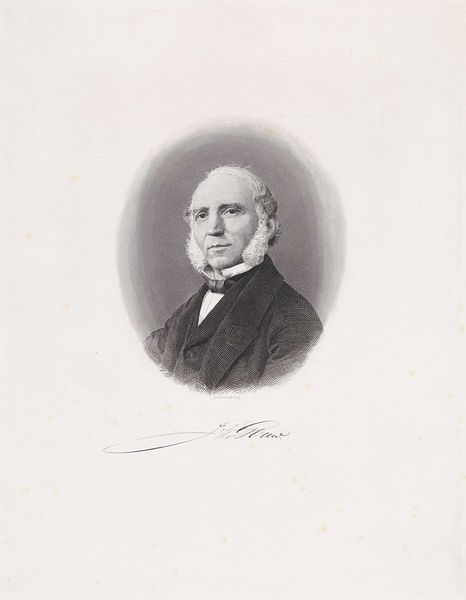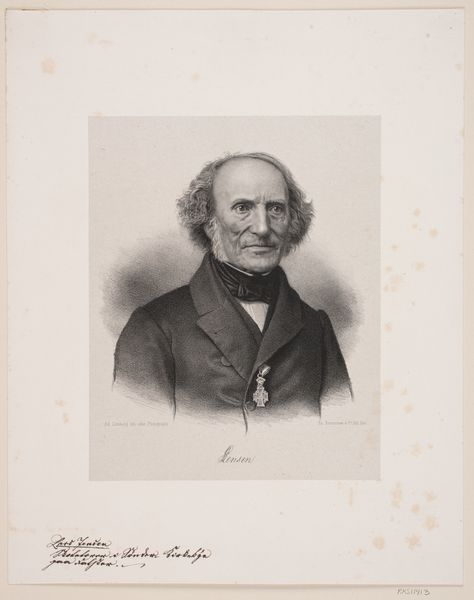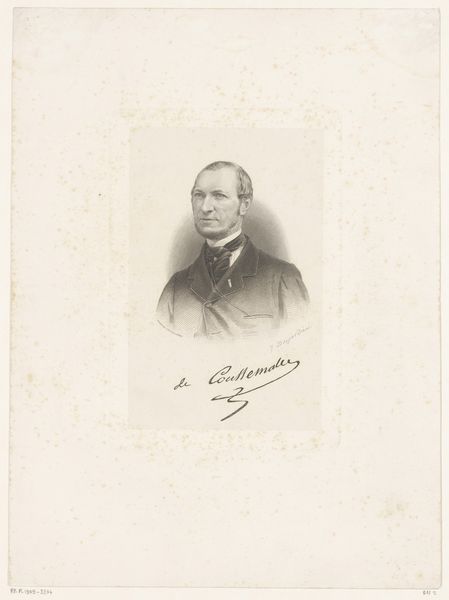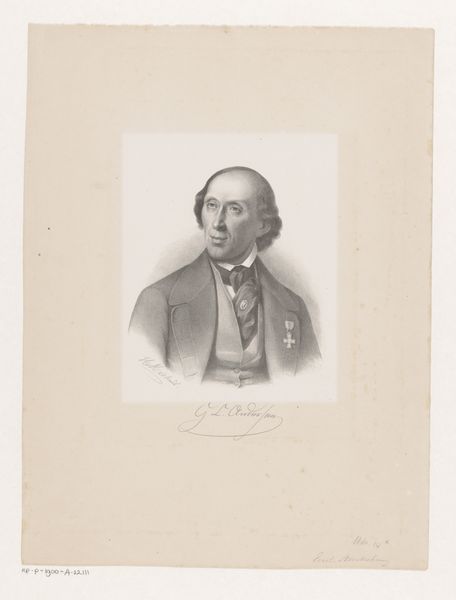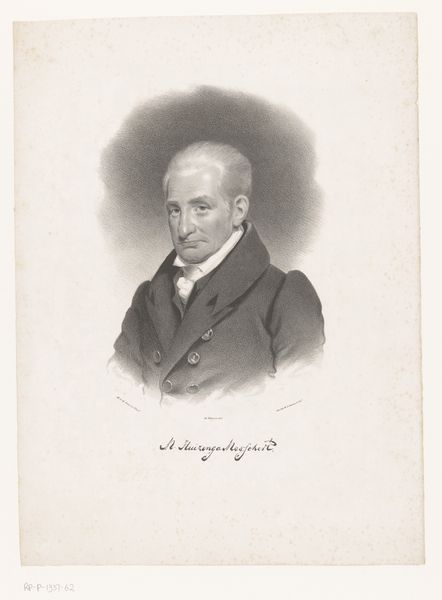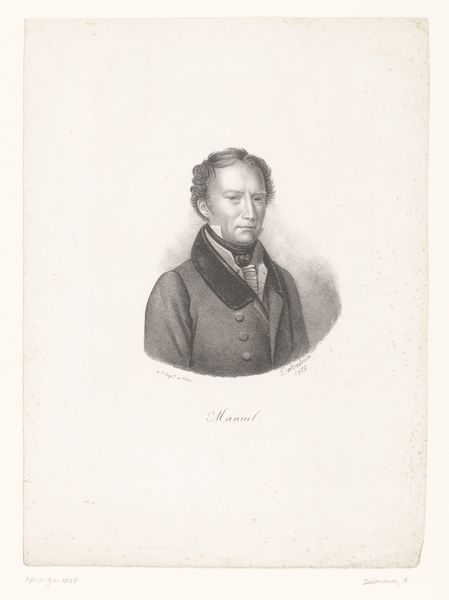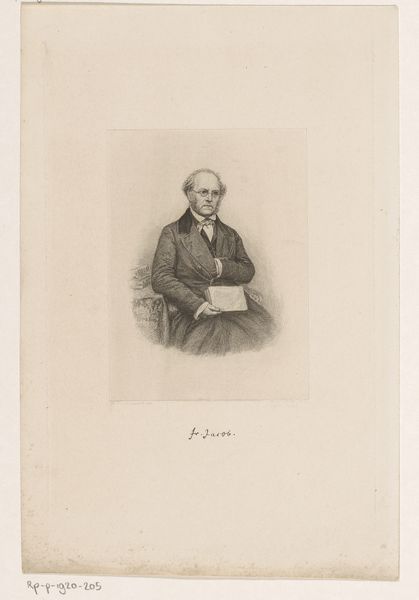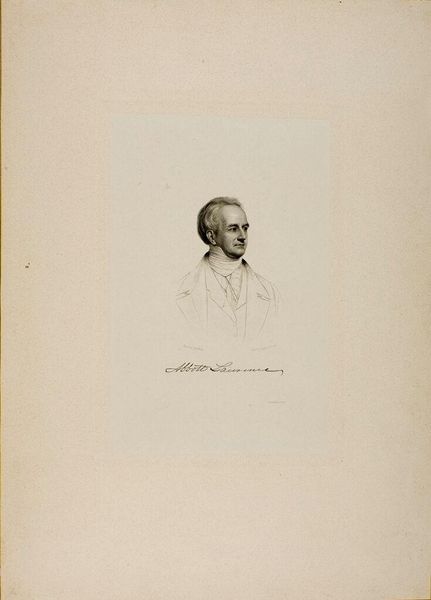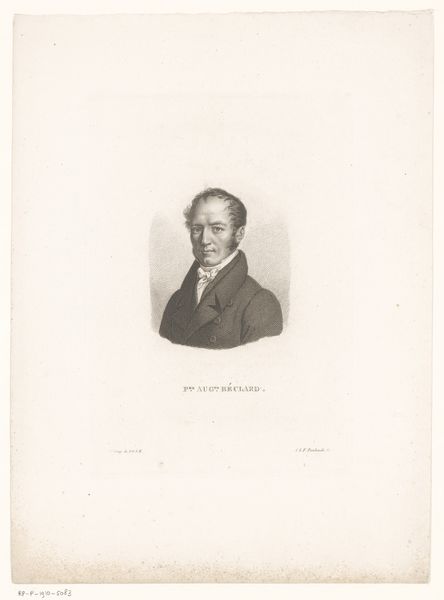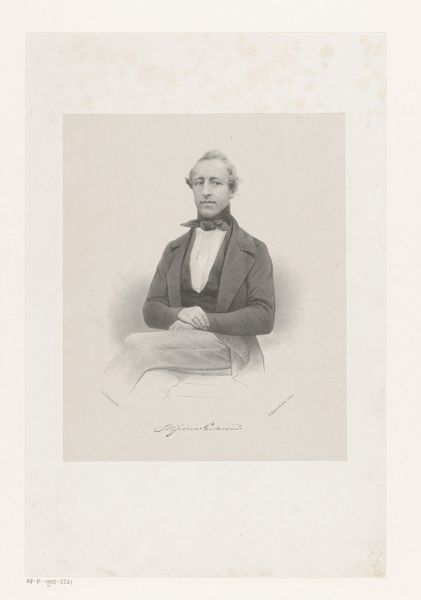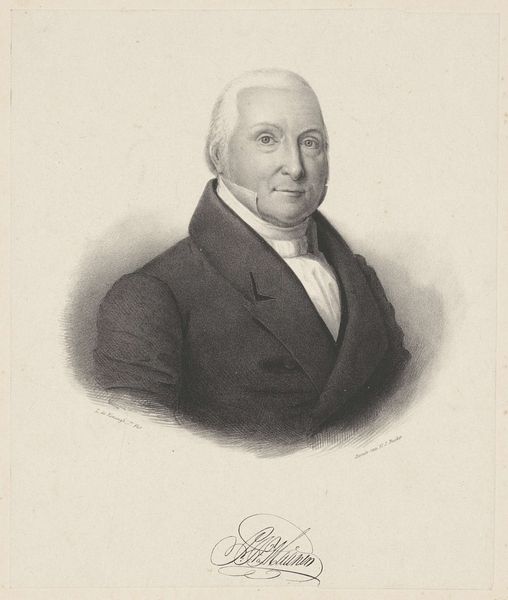
drawing, graphite
#
portrait
#
pencil drawn
#
drawing
#
16_19th-century
#
charcoal drawing
#
pencil drawing
#
graphite
#
portrait drawing
#
realism
Dimensions: height 401 mm, width 253 mm
Copyright: Rijks Museum: Open Domain
Curator: It strikes me as a study in reserve, an individual holding back in a period demanding social conformity. Editor: I'm drawn to the delicate line work. This is "Portrait of G.F. Westerman" dating from between 1823 and 1900, attributed to Johann Wilhelm (I) Kaiser, rendered with graphite. It resides here at the Rijksmuseum. Curator: Graphite allows a softness, doesn't it? Yet, see the crispness around the eyes? It's almost as though two stories are unfolding: public stoicism versus inner life. How does the weight of representation play into the subject’s identity here? Editor: The careful detailing suggests a wish to convey Westerman with sincerity. His gaze possesses an intensity. Notice the way the graphite models light and shadow. What enduring qualities of the man do we see in his face? I see experience etched there. Curator: And yet, those signs of experience exist alongside an almost caricatured formality – the high collar, the jacket. The constraints of 19th-century masculinity become quite visible. Could we read it as critique? A commentary on the performance of identity? Editor: Possibly, but portraiture also served a vital function in preserving memory and lineage. The symbols are more than surface decoration; his attire signifies a respected status, signaling specific socio-economic position and perhaps even certain belief systems. Curator: Absolutely, it also evokes debates surrounding visibility and power at the time. How can images affirm or subvert such codes? Editor: Right, what a symbol meant then might not be what it evokes now, and we should consider that when we examine a work like this. What appears straightforward becomes quite complex. Curator: Indeed. A quiet portrait with hidden depths that ripple out still today. Editor: Exactly. And its creation acts like a key to understanding Westerman and a different century with completely distinct sensibilities.
Comments
No comments
Be the first to comment and join the conversation on the ultimate creative platform.
